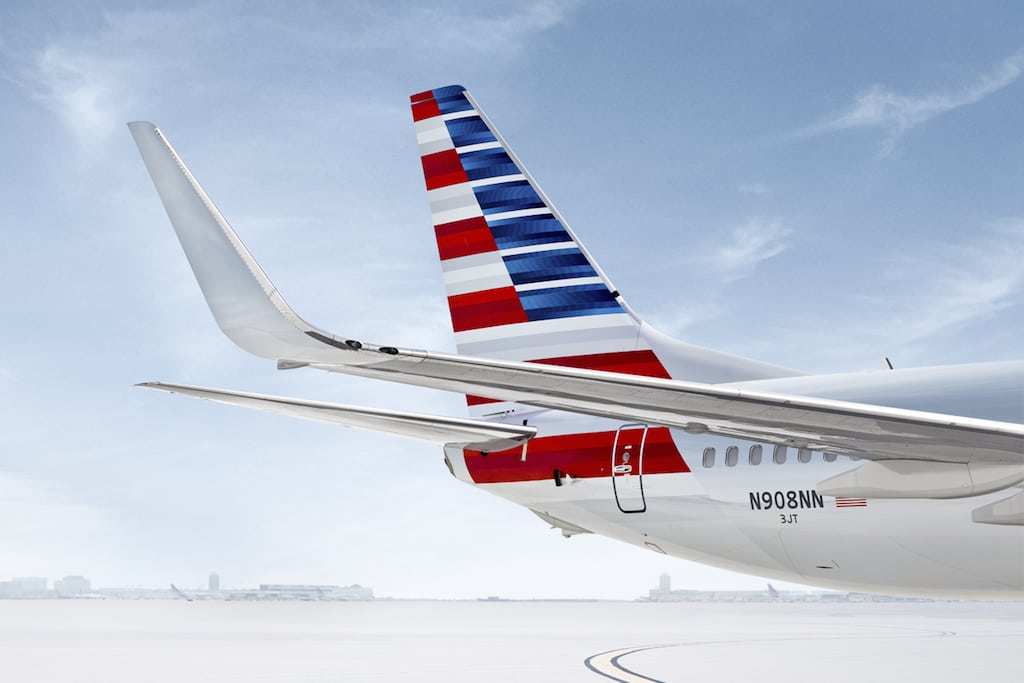Skift Take
In a lengthy soliloquy on American's first quarter earnings call, CEO Doug Parker indirectly told investors to relax. Yes, U.S. airlines are increasing capacity this year. But they're being prudent by solidifying their hubs, he said, and not repeating past mistakes.
American Airlines will engage in “smart efficient growth” mostly in markets where it maintains a competitive advantage, CEO Doug Parker said Thursday, responding to investors who fear U.S. airlines will add too much capacity to an already mature market.
American is among the more prudent carriers, planning to increase capacity 2.5 percent this year, roughly matching expected U.S. gross domestic product growth. But United Airlines spooked investors on Tuesday, announcing plans to grow 4-6 percent in 2018, 2019 and 2020.
United expects many new flights will come in Chicago, Denver, and Houston, connecting the three hubs with smaller U.S. cities where fares remain relatively high. United President Scott Kirby, who had the same job at American until August 2016, said United shrunk domestic operations too much under its previous management.
After its announcement, United’s share price fell from almost $78 per share to about $66 at Thursday’s close. Other airlines, including American, also saw share price declines, though not by nearly as much.
Analysts generally dislike it when airlines add capacity, fearing extra seats will drive down prices, and perhaps spark a fare war as carriers try to maintain market share. They’re wary of anything that might dilute airline profits, which remain strong. American on Thursday said it made a full-year pre-tax profit of $3.1 billion in 2017.
Investors wonder if fare wars might happen in markets such as Wilmington, North Carolina, when United begins new flights in April from Chicago and Washington Dulles. Now, American and Delta control the market, shuttling passengers through hubs to destinations across the United States and the world. As United expands in Wilmington and elsewhere, many passengers will have three choices for one-stop itineraries to places like Los Angeles, Las Vegas, or London, rather than two.
Carriers Being Prudent
American is also adding flights in smaller cities, including in Wilmington, as it has made the same calculation as United: Fares in smaller cities are generally higher than in larger ones, because there is less discount airline competition.
But in a long speech during American’s fourth quarter earnings call, Parker said there’s enough room for the three major U.S. legacy airlines to grow without cannibalizing each other, so long as each focuses on routes from its hubs.
This type of growth, “doesn’t result in yield decline [and] doesn’t result in fare wars,” Parker said. “It does move share from competitors. I’m not trying to suggest this is all stimulative. It’s not. It just doesn’t engender the kind of response that it feels like people seem to think by just looking at the numbers.”
Like any business, airlines want to grow when they’re making money. And while that seems to make some investors nervous, Parker noted today’s growth appears more rational than in previous years. With one exception — Delta Air Lines is building a gateway in Seattle, where Alaska Airlines dominates — carriers do not seek to encroach on a competitor’s area of dominance.
Instead, Parker noted, American is building its strongest hubs, such as Dallas/Fort Worth and Charlotte. In an alternate strategy, Parker said, American could decide — because it is the world’s largest airline — that it needed to increase its presence in the biggest U.S. cities, many dominated by United and Delta. It would be a mistake, he said, for American to launch routes like San Francisco-Minneapolis.
“That would be growth outside of our core asset base and that would engender a certain competitive response from those carriers that do have a strategic advantage in those markets,” he said. “Over time we would lose a good bit of money.”
As American builds its hubs, some of the new flights will come from increasing frequency on existing routes, while others will come from adding new routes to medium- and smaller- sized cities American already serves.
One example is Oklahoma City. American has long done well in the market with flights to Dallas/Fort Worth, so it is adding a nonstop to Philadelphia. With the Philadelphia flight, Oklahoma City customers will have new one-stop options to many European destinations, including Dublin, Munich, and Amsterdam, that now require two stops.
“We’re taking existing aircraft, increasing utilization, and redeploying aircraft from markets that maybe aren’t doing quite as well, to places where we know we know we can do well where we have real strategic advantage,” Parker said.
Some flights also will come in completely new markets. But even in those, American is not worried about competitive response. It recently announced three new cities— South Bend, Indiana; Panama City, Florida; and Missoula, Montana — and Parker called them low-risk.
“That means whoever’s going to Panama City maybe loses a little share, but that doesn’t start fare wars,” he said.
The Daily Newsletter
Our daily coverage of the global travel industry. Written by editors and analysts from across Skift’s brands.
Have a confidential tip for Skift? Get in touch
Tags: airline innovation, american airlines, united airlines
Photo credit: American Airlines will add domestic routes in 2018, but said the market can absorb the extra flights. Pictured is an American Boeing 737. American Airlines
